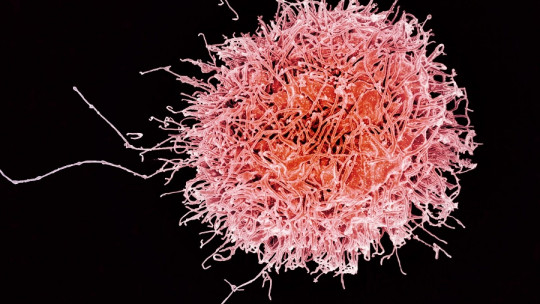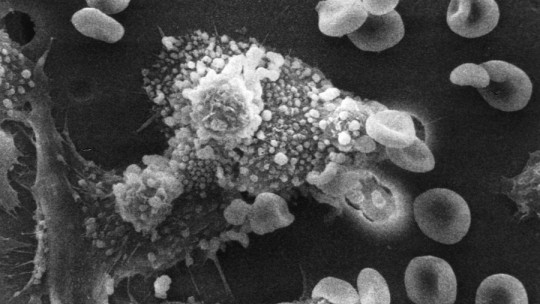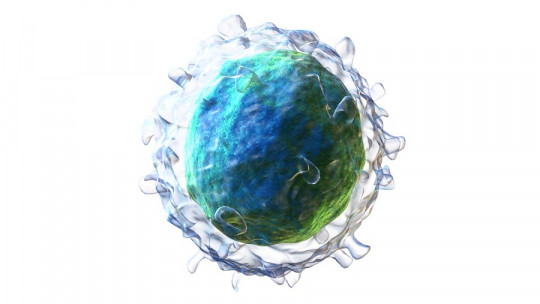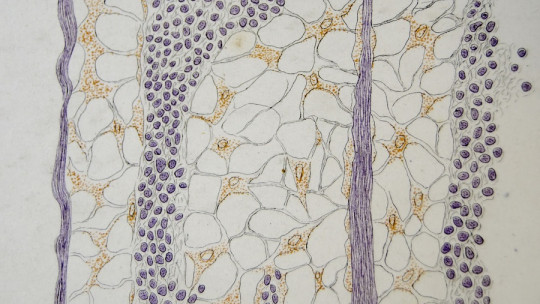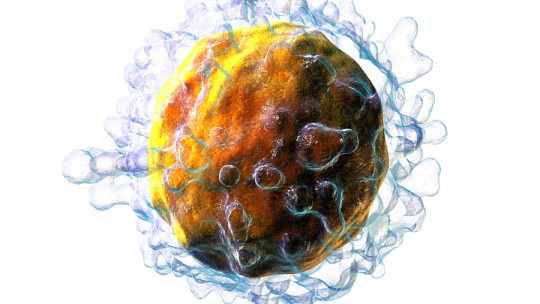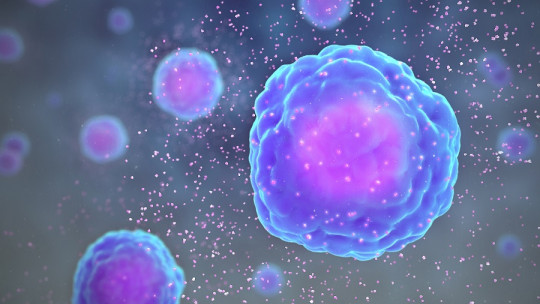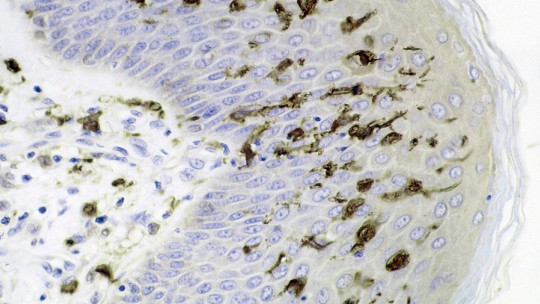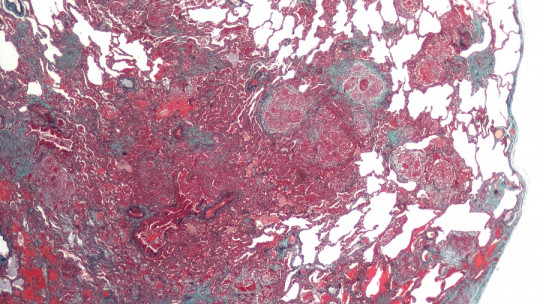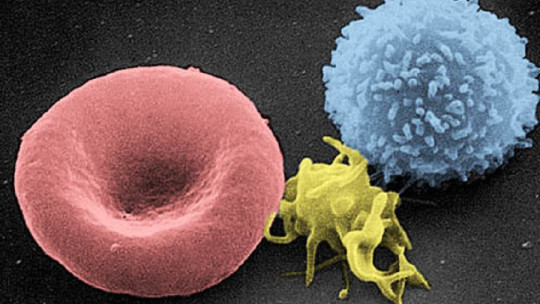
The human immune system is defined as a complex network of cells, tissues, organs (and the substances they produce) that help the body fight infections and other diseases. We are not only talking about viruses and bacteria: this machinery defends us from external elements in allergies, harmful products and internal failures within the body, such as the appearance of cancer cells.
Conceiving the existence of life as we know it today without the immune system would be impossible. At any given time, it is estimated that 95% of humans on Earth have some type of pathology, and almost 150,000 people die every 24 hours around the globe. Can you imagine what these figures would be like if we didn’t have the intricate defense machinery that immunity entails?
Today we come to show you one of the essential cell types to understand acquired immunity in humans: T cells or T lymphocytes If you want to know everything about them, continue reading.
Generalities about the immune system
Talking about T lymphocytes without previously laying certain foundations is like starting to build a house from the roof. Therefore, in the following lines we will tell you some generalities of great interest about the immune system.
Historically, it has been considered that we have two types of immunity: innate and acquired The first is the one with which we are born, and which generally responds to the possible entry of pathogens into the body. Within the innate immune system we not only find cell bodies, since the mucous membranes, epithelia, skin, secretions such as sweat or saliva and the cough reflex itself are also part of it.
For example, tears contain bactericidal substances, the pH of sweat prevents the colonization of pathogens, and gastric acids limit pathogenic bacterial overgrowth to a minimum. Biological barriers are based on physical, chemical and biological components (intestinal flora, for example, prevents other bacteria from growing).
The most famous cell bodies of the innate immune system are neutrophils and macrophages They are the first to reach the site of infection, and generally respond by phagocytosing the bacteria. Macrophages also present antigens to other immune components (components of the microorganism that cause an immune response).
On the other hand, we have acquired immunity, which improves the more the individual is exposed to potential pathogens. We will talk about it in more detail in the following lines, but you should keep the following in mind:
For both reasons, making a distinction between these types of systems is useful from an informative level, but not so useful from a physiological point of view. We are facing two sides of the same coin with a common goal: the short and long term protection of the individual
What are T cells?
T cells or T lymphocytes are defined as a type of white blood cell that is formed from stem cells in the bone marrow. Its main functions, in general terms, are to protect the body in an adaptive way from infections and deleterious endogenous processes, such as cancer.
Lymphocytes are a subgroup within leukocytes, a heterogeneous group of blood cells that do not contain typical pigments, hence they are known as white blood cells. In general, it is estimated that a healthy human being has about 4,000-11,000 white blood cells per microliter. In any case, this represents only 1% of the total blood volume, since red blood cells greatly exceed them.
T lymphocytes are produced in the bone marrow, migrate to the thymus (where they mature) and differentiate into other subtypes Before delving fully into the world of T cells, we find it interesting to share a series of data that are common to types B and T cells alike. Go for it.
Generalities of lymphocytes
Lymphocytes are agranulocytes, that is, They do not have granules in their cytoplasm, but they do have a large compartmentalized nucleus They are about 8-10 micrometers in diameter on average (although there are larger and smaller ones) and their shape is rounded. There are 3 types of lymphocytes: B, T and null cells. Generally, 80% of circulating lymphocytes are T cells, 15% are B cells, and the remaining percentage are null cell bodies.
As we have said, its nucleus is large (it occupies most of the cell), rich in heterochromatin and with a somewhat mismatched position with respect to the cell center. These cell types They have little peripheral cytoplasm, but what little there is houses mitochondria, a small Golgi apparatus and a few profiles of Rough Endoplasmic Reticulum (RER) It also has a high number of ribosomes and a few lysosomes.
Within lymphocytes (whether B or T), there are two large cell types. These are the following:
Types of T cells
It is necessary to highlight that there are 4 main types of T cells, although there are some more. We tell you its particularities below.
1. Cytotoxic T lymphocytes
Also known as CD8+ (due to the nature of its membrane surface molecules), cytotoxic T cells detect peptides presented by MHC class I molecules and destroy infected cells Translated into a friendlier language, this functionality could be defined as recognizing infected or transformed cells and destroying them through mechanisms that cause apoptosis, that is, their destruction.
2. T helper lymphocytes
Also known as CD4+ cells, these cell bodies are responsible for initiating the immune response cascade. Its function is activate the functionality and action of other immune cells through the secretion of cytokines, proteins directly involved in the effectiveness of the response
3. Memory T lymphocytes
What defines this type of T cells is their ability to remain quiescent after the elimination of the antigen (from the pathogenic bacteria). Thanks to them, a more effective response to the same antigen is allowed in future exposures, compared to the power of response provided by virgins While a virgin T cell takes 5 to 7 days to differentiate into effector cells against an unknown antigen, memory cells acquire their function in 1-3 days maximum.
They have a long life, are functionally inactive leukocytes, and can remain circulating in the blood for months and even years Vaccines are based on this premise: they seek to have both T and B memory lymphocytes permanently activated in the individual, in order to generate immunity to the pathogen that has been injected into the patient.
Regulatory T lymphocytes
As their name indicates, they are responsible for regulating the individual’s immune response, putting an end to the autoimmune reaction and eliminating T cells that may pose a problem.
These problematic T cells They are known as self-reactive, that is, they can identify cell molecules essential for our survival as dangerous antigens (like red blood cells), eliminating them by mistake. Luckily, there is negative selection in the thymus that “gets rid” of these lymphocytes before they can cause damage. When they escape this machinery, regulatory T cells are the final containment machinery.
Summary
The world of T cells (and by extension B cells as well) is extremely complex, as there are many terms that must be understood and abstract physiological reactions that cannot be directly observed. If we want you to leave with an idea, this is the following: T cells are an essential part of the acquired immune system, and come in the form of both memory and effector lymphocytes which benefit the body in various ways.
Antigens are parts of microorganisms that elicit an immune response in us. When one of them enters our body, the cells recognize it and activate different mechanisms. Thanks to memory cells, the more we are exposed to a specific antigen, the more tolerance we will develop against it in the long term.

